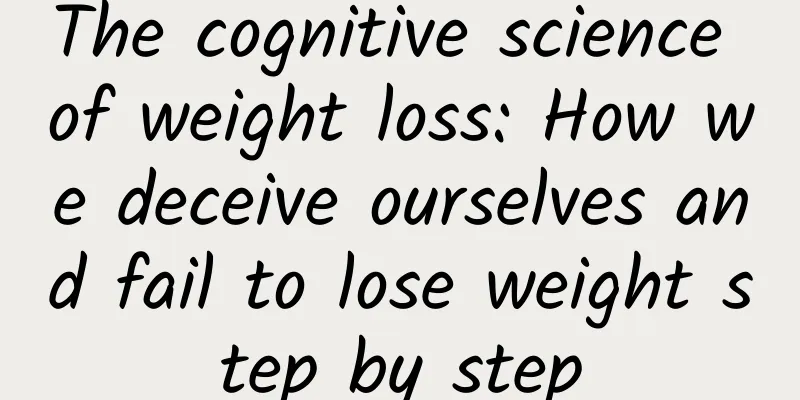Chimera - the "incredible" technology in science and technology?

|
Nowadays, more and more Chinese technologies are changing our lives, such as the Tiangong Dream, Beidou Network, 5G Unblocked, and the Dream of an Artificial Sun, etc. So, in your impression, which is the most amazing technology? Today I am going to tell you about a technology that is a bit against the will of heaven: chimera. That's right, it's just what you imagined, a chimera, a chimaera, a monster in ancient Greek mythology. It has a lion's head, a goat's body, and a python's tail. Of course, this saying exists in both Chinese and foreign cultures. For example, our legendary Fuxi and Nuwa, who have human heads and snake bodies, are similar. Nowadays, scientists are also artificially synthesizing this monster. Of course, this synthesis is not for war, but for curing diseases and saving lives. 01. Shrimp and pork heart In many cases, human death is caused by a problem with an organ, which leads to the death of the whole body (otherwise there would be no organ donation). Therefore, if the organ source problem can be solved, many people can live longer. A typical example is kidney transplantation to treat uremia. However, organs are a problem. So scientists came up with xenotransplantation, that is, finding an organ from other animals and transplanting it to humans. The most common ones are pigs. Moreover, considerable progress has indeed been made. For example, at the beginning of the year, foreign scientists transplanted a pig heart into a human, and the human survived for 2 months. This was an epic breakthrough. However, there are still some problems with this type of organ transplant, the most typical of which is immune rejection. No matter how it is modified, this organ is still a pig organ, so you will always face a problem, immune rejection. Humans even reject organ transplants from their own species, not to mention cross-species transplants. So after the organ is transplanted, you need to take immune rejection drugs all the time, and even then, it will be difficult to bear. Secondly, many people are still not very accepting of pig organs, and some groups are even strongly opposed to pigs, even though pigs are currently recognized as the top 1 organ for transplantation. 02. Borrowing Chickens to Lay Eggs What should we do in the face of rejection and people's acceptance? Is it possible to directly produce human organs? Embryos are a good idea, but this path is currently a dead end. Because when an embryo develops into an organ, it is actually a relatively complete person. Taking out the organs is murder, so this path is directly resisted by all mankind. Some people may wonder, can we induce stem cells to develop into organs in vitro? In theory, it is possible, but in reality, it is not feasible. If you induce cells to develop towards the heart in vitro, you can grow a bunch of cardiomyocytes. However, they are a lump of meat, not a heart. Not to mention those tiny nerves and blood vessels, which humans cannot achieve at present, so this lump of meat will rot inside as it grows. Therefore, the miracle of life really makes people sigh all the time. So, someone came up with a new idea: Can we "borrow chickens to lay eggs"? That is, let human organs grow inside animals? This is the idea of "chimera". 03. The chimera is growing up In 2010, this technology debuted. Nakauchi Hiromitsu used blastocyst complementation technology, which is to mix iPSCs of other species into the blastocyst of the animal at the blastocyst stage to achieve chimerism, and finally the animal grows organs of other animals. In this way, the pancreas of a vole was cultivated in a mouse for the first time. They're two different species. Specifically, Nakauchi first knocked out the pancreas of mice through genetic manipulation, then extracted fertilized eggs from the mice and cultured them, and injected rat stem cells into them. Next, the mouse fertilized eggs and rat stem cells developed together and mixed with each other. Finally, a mouse with a pancreas completely derived from rat cells grew out. This research can be said to have opened up a whole new field, as mice and rats are different species of different genera. Finally, being able to grow a rat pancreas in a mouse provides a new idea for xenogeneic organ culture. You know, this pancreas is completely made of rat cells, so it can be directly transplanted into rats without worrying about rejection. In addition, this organ itself is developed in the animal body and has the complete functions of a rat pancreas, avoiding the problem of lack of function of organs cultured in vitro. This provides us with a new idea for cultivating human organs. This is the standard Chimera. 04. Chimera and Humans Once again, let me explain why this experiment is so shocking, because mice and rats, although they seem to be only different in size, are actually two species. Just like humans and chimpanzees, they are two species. Combining the growth of two species together and cultivating organs of one species within the body of another, isn't this a standard Chimera? Moreover, this is not a relatively low-end technology like growing a human ear on a mouse's back. After all, it is not very difficult to make an animal grow a human body. However, it is really a big deal to make an animal grow a functional xenogeneic organ. Humans have been experimenting with stem cells for so many years, but they have not solved this problem. They can only grow a piece of meat. Think about how difficult it is to achieve this in the current human world, as this organ not only has an external appearance, but also an internal structure, blood vessels, nerves, and complete functions. If this is the case, then, can it be used for human organ cultivation? This technology has much more advantages than xenotransplantation. First of all, the rejection problem is eliminated. Even human organ transplantation cannot avoid this. After all, human beings have organ rejection. But what about this one? It takes cells directly from the patient's body, such as epidermal fibroblasts, and then uses the patient's cells to culture chimeras. That means there is no immune rejection. Why would you reject yourself? Secondly, more precise customization. The difference between people is not only in immunity, but also in genes. No two people in the world have exactly the same genes. But because this organ is cultivated using a person's own cells, it must be exactly the same as the original person. The original one is better. Therefore, this technology has attracted a lot of attention. 05. We are taking action Currently, many scientists around the world are conducting research in this direction, and the progress gives us hope. For example, in 2021, the first human-monkey chimera Ji Weizhi, an academician of the Chinese Academy of Sciences, led his team to produce the first human-monkey chimera embryos in history[1]. The embryos in this study had differentiated to the germ layer stage and showed the potential for chimeras. Despite numerous difficulties, chimera research is already on the way, and this is the hope for the future. [1] Tan T , Wu J , Si C , et al. Chimeric contribution of human extended pluripotent stem cells to monkey embryos exvivo[J]. Cell, 2021, 184(8):2020-2032.e14. |
<<: Don’t wear yellow or green clothes when you go out! Otherwise…
>>: 53 people died! Knowledge that can save lives at critical moments! You must know...
Recommend
[Video] Xiaomi Senior Planning Director: How to come up with marketing ideas that have the potential to achieve great results with little effort?
The content of this article is selected from the ...
5 tips for running promotional events!
Usually when it comes to operational activities, ...
Do you know how to solve the 3 most important equations in APP operation?
During APP operation , there are a large number o...
50 stunning scenery photos to take you through the Hexi Corridor!
Not to the Northwest I don't know the vastnes...
As the Year of the Ox approaches, are those enduring health-preserving methods in life secrets or misunderstandings?
Niu Niu: The New Year is prosperous, let’s make s...
A woman fell into a coma after taking her medicine in pieces! Never take these five types of medicine in pieces, otherwise...
Recently, a piece of news like this appeared onli...
Wuhan Tea Contact Information
Wuhan high-end tea drinking is unique and very un...
When netizens said that WeChat plagiarized MiTalk, how should we understand the “Hehe” response from Tencent’s public relations director?
In recent times, Tencent’s public relations direc...
A woman suffered liver failure after eating two super sweet pineapples! Be careful, it’s hot!
Now is the season when fruits and melons are frag...
The author personally interprets: How important is the “cloud” seen by China’s Sky Eye?
In October this year, the National Astronomical O...
Science in the Week: A Woman Lost Sensation in Her Right Hand After Taking a One-Hour Nap on Her Arm
1. Pickled cabbage buns are pickled in a pit Rece...
Which company providing SEO optimization services in Guangzhou is better? How to choose?
Nowadays, due to the increasing bidding costs, ma...
Douyin operation: practical tips for Douyin shooting!
1. What is TikTok? Some people say that Douyin is...
Soul product analysis!
In China, stranger social apps are a mysterious e...
Camera2 custom camera development process detailed explanation
[[432612]] Preface Today I will introduce the det...









